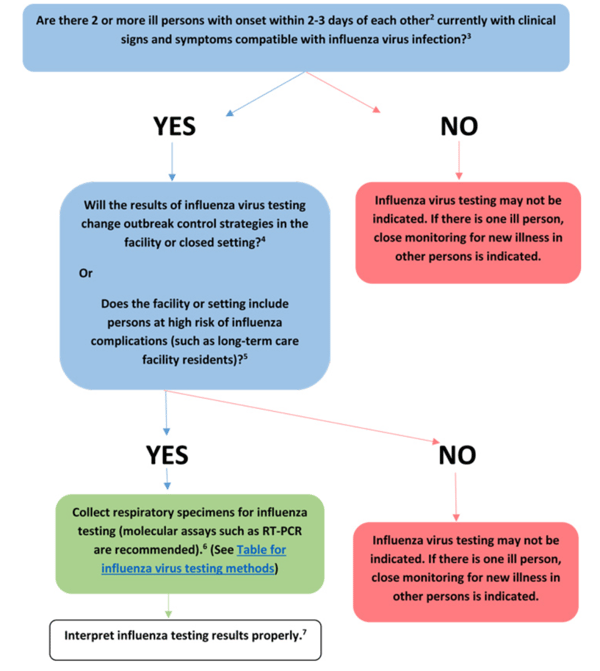COVID-19 is currently dominating the news and while it’s important that everyone is informed about and prepared for Coronavirus, an extended and particularly vicious flu season continues in the U.S. and Europe.
As of the end of February, the CDC reported at least 14,000 people have died and 250,000 have been hospitalized during the 2019-2020 flu season. The season was at peak during the time of reporting. At that same time, Flu News Europe reported that influenza activity remained elevated but had already reached peak levels.
While this season’s strain hit children particularly hard, the flu is always of concern to vulnerable populations that include the elderly. In fact, the CDC estimates that between 70-90% of seasonal flu deaths occur in people 65 years or older.
The Perfect Setting
So why does the flu feel right at home in long-term care and post-acute care facilities? The nursing home environment offers a plethora of risk factors including close quarter living, lowered immune systems and/or decreased health of residents, frequent outside visitors and staff, and shared caregivers.
The elderly are not only more susceptible to the flu, but often experience more severe symptoms and an increased recovery time. There are also potential side effects including bronchitis, pneumonia, sinus and ear infections, and worsening of existing medical conditions.
Additionally, older patients don’t always display the same symptoms as younger patients, such as a fever, and existing medical conditions can mask the appearance of flu, making it more difficult to diagnose.
How to Lessen the Impact
To ensure residents, staff, and visitors remain healthy, the CDC recommends that influenza vaccinations be provided routinely to all residents and healthcare personnel of long-term care facilities prior to an outbreak. The CDC also recommends daily surveillance if there is local influenza activity.
In Europe, the World Health Organization Regional Office for Europe recommends that annual influenza vaccinations should be offered to all staff who will potentially have contact with residents, unless contraindicated. All residents should be offered repeat annual influenza vaccination prior to the onset of the influenza season, again unless contraindicated.
What about testing? Is testing necessary – or can flu season be managed through clinical symptoms alone? On one hand, if a resident tests positive, they can possibly be quarantined from other patients in the home to prevent the spread to already immune compromised people. On the other hand, symptoms of the flu typically don’t appear for 2-3 days after exposure, meaning that outbreaks can occur even if you are proactively testing.
In the U.S., the CDC recommends testing in long-term care facilities when there is a confirmed or suspected influenza outbreak (2 or more ill residents). In fact, even if it’s not flu season, testing should occur when any resident has signs and symptoms that could be due to influenza, and especially when two residents or more develop respiratory illness within 72 hours of each other. The following CDC guidelines were issued for testing in investigational outbreaks in institutional or other closed settings:

The World Health Organization Regional Office for Europe recommends testing with advice from the local public health (health protection) unit. Other respiratory virus pathogens which may cause acute respiratory illness should be considered and tested for based on advice from local public health authorities. Respiratory samples should be taken as soon as possible from symptomatic residents, preferably within 48 hours of symptom onset, and those with most recent symptom onset should be prioritized.
Not only is testing important for diagnosis and outbreak control, testing may be used to inform decisions on use of antiviral treatment, antibiotic treatment, need for further diagnostic tests, and recommendations for ill persons living with others who are at high-risk for influenza complications.
The Take-Away
Long-term care settings are regrettably a haven for infectious diseases such as the flu. Vaccination and infection prevention and control measures will likely not prevent all cases which can be introduced by newly admitted residents, healthcare personnel, and visitors. Testing is a vital measure of preventing or limiting an influenza outbreak.
Most flu testing is CLIA-waived, meaning that facilities can conduct tests with a simple CLIA license. These tests can be run by almost any staff member with minimal training. The cost of running these tests is much lower than the cost of having to quarantine the entire facility due to undiagnosed flu.
Sekisui Diagnostics offers a range of CLIA waived products for flu testing. The OSOM® Ultra Flu A&B Test is an in vitro rapid qualitative test that detects influenza type A and type B nucleoprotein antigens directly from nasal swab, nasopharyngeal swab, and nasopharyngeal aspirate/wash specimens obtained from patients with signs and symptoms of respiratory infection. It offers a simple 5 step CLIA-waived procedure with pre-measured extraction buffer for swab samples, and is available in the U.S., Latin America, Europe, Middle East, Africa, and Asia.
The Acucy™ Influenza A&B Test allows clinicians to test and provide fast and accurate results that aid in the treatment of a patient in one office visit. It is available in the U.S. Finally, the Silaris® Influenza A&B Test is a molecular diagnostic test utilizing polymerase chain reaction (PCR) technology providing accurate results for early diagnosis and proper management of influenza. This easy-to-use test is also available in the U.S.



Share Article